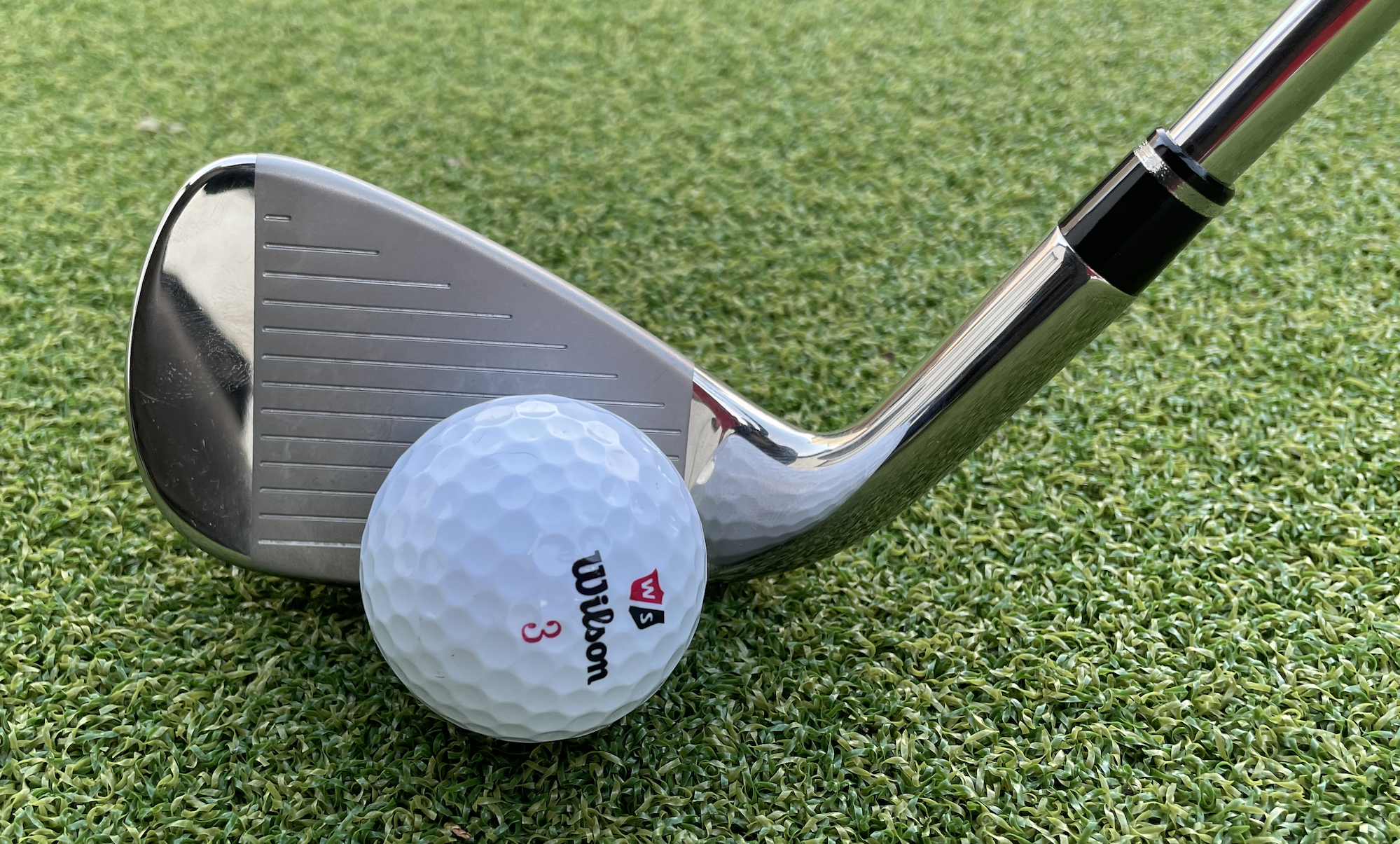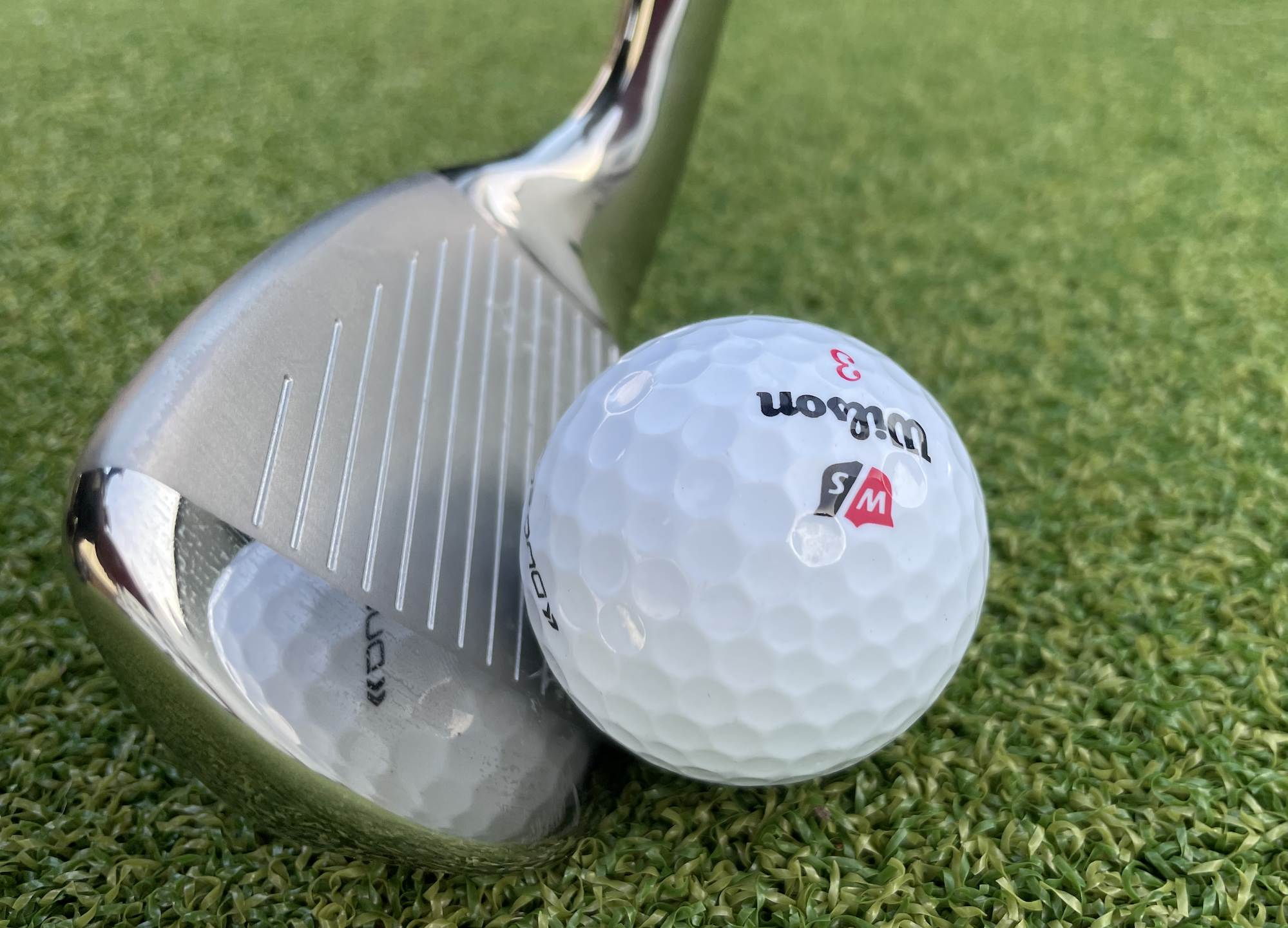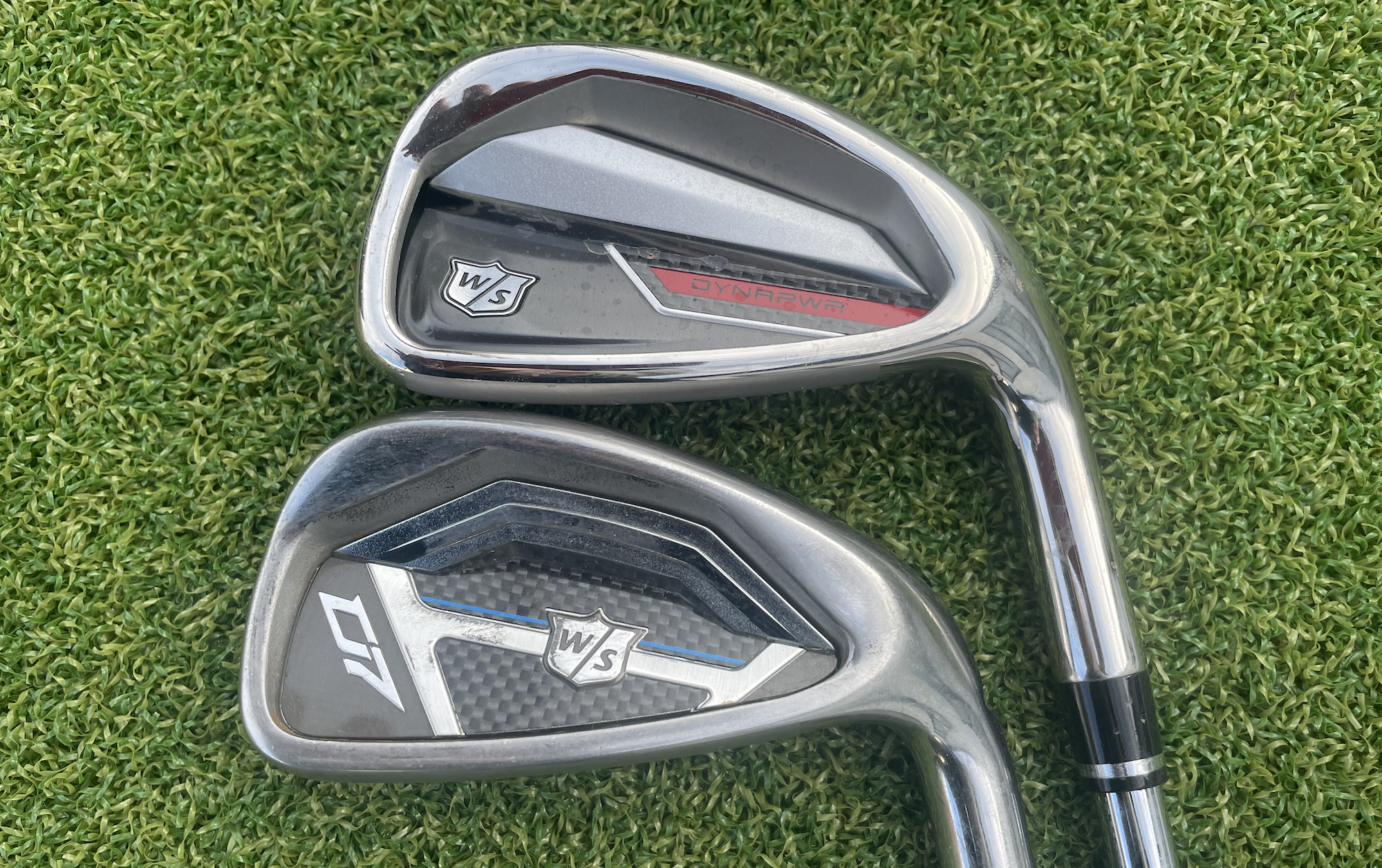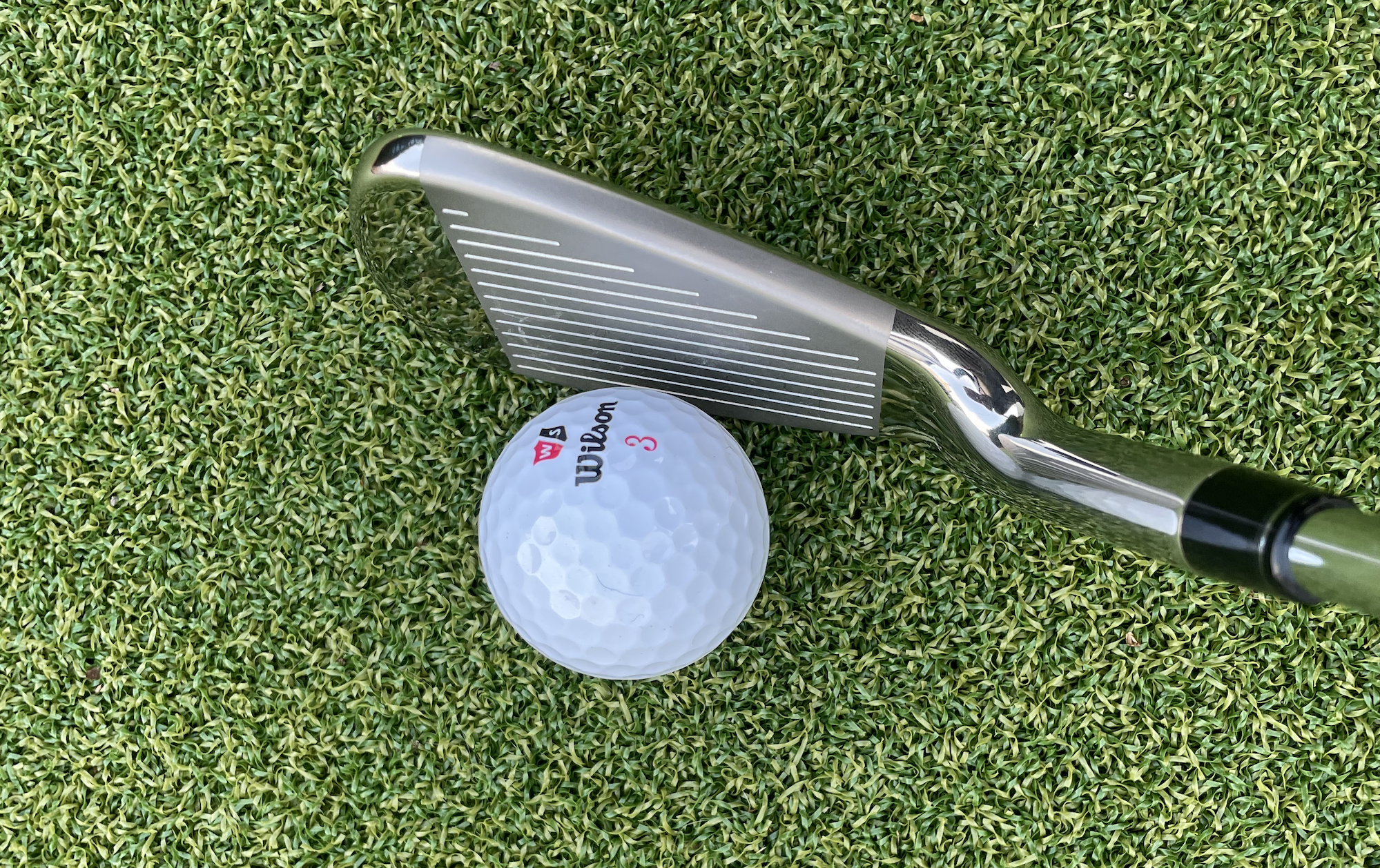
The only golf club to have been used on the moon has had a reboot for 2023. Wilson Staff Dynapower is back, and I’ve been putting them through their paces on the green. My review is that these are an excellent option for mid-high handicap golfers or even for high single-figure handicap players looking for more distance.
But before I get into the nuts and bolts of these impressive irons, allow me to recommend some of our useful guides to the best golf watches, best golf bags, best golf shoes and the best putters on T3. And if you're in the UK, don't let the bad weather deter you from playing your favourite sport: the best golf waterproofs will keep you dry, even if it's pouring down on the green.
Right, so the Dynapower irons, then. To golf nerds and historians, this is a big deal. Without going too deep into the back story, in 1956, Wilson launched a new muscle back iron with innovative weight distribution. It was a huge success and helped Wilson establish their reputation as the market leader in irons.
Technology has moved on a great deal since then, and for this new rebranding of Dynapower, Wilson used Artificial Intelligence (A.I.) for the first time on its irons. This technology has been used successfully for the Dynapower and D9 woods, and Wilson claim that it has now allowed them to distribute weight around the club face to help with forgiveness and increase speed. But are those improvements noticeable to the average golfer? Let's find out.
Wilson Staff Dynapower Irons review: price and availability
The Dynapower drivers, fairway woods and irons will be available from March 2023 with an RRP of £599.99, but some retailers are offering them for a slightly lower price. For example, in the UK, at American Golf, you can pre-order for £579.00. In the US, you can buy direct from Wilson.

Wilson Staff Dynapower Irons review: looks, sound and feel
Dynapower irons aren’t hugely different in design to the D9 (or even the D7) irons they are replacing, but they are just that tad more stylish. The red and black is a welcome throwback to Wilson’s traditional colours, and the overall look is modern and appealing. These clubs look nice in the bag.
Over the ball there is a difference between the new Dynapower and Wilson’s other game improvement irons of recent years. The generous offset remains but the topline is considerably thinner and overall the Dynapower is less ‘chunky’ without losing the benefits you get from that more powerful design.
The sound is a little ‘clicky’ due to the power of these irons but it's not too extreme and a well struck shot still sounds like a well struck shot. It feels like one too. When you make proper contact the ball really explodes off the face and it's a pleasing sensation.

Wilson Staff Dynapower Irons review: technology
A lot of purists have a problem with strong lofted irons but they’re here to stay and they serve a purpose. The golf snobs may not like it but strong lofted, game improvement irons make the game much easier for the average golfer. Dynapower are particularly strong lofted and the 7 iron is 27 degrees, which basically makes it a 5 iron, only it’s easier to hit than a 5 iron because it’s a shorter shaft.
Based on the A.I. methods used in testing, thousands of clubhead data variations and aesthetics were analysed to produce the most effective and pleasing shape possible. The result is that Dynapower features the thinnest face Wilson have ever designed relative to the overall average thickness. It also features variable thickness for each section of the face.
What does this mean in performance terms? The variable thickness is designed to make more of the clubface hot, specifically the centre-to-toe area where 85% of shots are hit.
Power holes on the sole of the club are back too. They've been a staple in Wilson's recent game improvement irons but they have been upgraded for Dynapower. Wilson Power Hole 3.0 technology is designed to deliver maximum ball speed across the face of each club.
Spoiler alert: I put the Dynapower up against the D7 and the ball speed was indeed increased. More on that shortly.

Wilson Staff Dynapower Irons review: performance
I’ve played Wilson Staff irons for almost all of my life and for the last the last three years I’ve had the excellent D7s in my bag. So I put my D7s up against the new Dynapower to see what kind of difference there was. The answer is that there’s not too much, but that’s ok though because the D7s are great and improving on them was never going to be easy. I have also tried the D9 irons (the successor to the D7) and those were great too, but they were pretty much the same club as the D7 so there was little point in me upgrading. Even the name sounded similar.
The Dynapower irons have generated much more of a buzz because of the back story and the tradition of the name, but I wanted to compare them to my D7s to see just what - if any - advancements have been made. The first thing to say is they look nicer (see below). They’re less chunky when you’re over the ball and they’re slightly stronger in loft, which means there’s a very small increase in distance. The ball flight is distinctly lower but I didn’t notice any major difference in forgiveness. Dynapower irons are extremely forgiving, just as the D7 and D9 irons are.

Other than better aesthetics, I don’t feel like Dynapower gives me that much much more than I’m getting from my D7s but that’s to be expected. Brands release new clubs every year and the truth is that there is very rarely any significant improvement on the previous release (particularly with irons). Improvements are very much incremental, and that’s right across the board. This year’s TaylorMade Stealth2 driver is not going to blow away the original Stealth from last year, but if you compare it to a TaylorMade driver from five or six years ago then there will be a noticeable improvement.
It’s the same with irons. The 2023 releases aren’t going to be significantly better than what we saw last year. They may not even be slightly better in some cases. There’s only so much tech you can put in these clubs, so earth shattering improvements just aren’t possible year on year. If your irons are several years old then that's a little different.
The Dynapower irons gave me on average an extra four yards carry on a significantly lower launch, with an increase in ball speed of between 1mph and 2 mph depending on the club. The spin rates were different too. In the shorter irons the Dynapower spin rate was lower than the D7 but in the mid irons it was slightly higher. However, I’m not placing too much stock in this as the variance might just be down to how I swing the club, and it was a negligible amount anyway.
The Dynapower might be slightly more forgiving, particularly on strikes nearer the toe. The tech is designed around that but I don’t tend to hit too many off the toe so it’s difficult for me to judge. That’s not to say I don’t mishit iron shots, it’s just that mine tend to be more fat or thin rather than toe or heel.
The flight is definitely more penetrating with the Dynapower and it isn’t just down to the stronger loft. One degree of loft isn’t going to cause such a noticeably lower ball flight, particularly as my natural flight is quite high anyway. Besides, I know it isn’t about the loft because the Dynapower 9 iron had a lower ball flight than my D7 8 iron!
You can see a small sample size below which shows a comparison between the Dynapower and the older D7 irons. The data was compiled from 30 shots with each club.

I felt as though I was hitting it more consistently with the D7 irons but that’s to be expected as I’ve been playing those clubs for three years and have a great familiarity with them. The more I hit the Dynapower irons on the range the more my level of comfort with them increased and I was able to get a better feel for how it stacked up against the D7. There is a definite gain in distance, a significant difference in ball flight and a probable improvement in forgiveness.
Most of my testing had been on the range but after becoming more familiar with the feel of the Dynapower I played 18 holes on my home course with them. It was my first time on the course in 2023 so I was a little erratic off the tee, but my iron play was solid and the Dynapower performed impressively. When I managed to hit the green the ball stopped quickly despite the lower than usual flight.
I also asked one of the professionals at my local driving range to hit some shots with the Dynapower 7 iron and to give me his thoughts. He was able to hit a nice variation of shots and was impressed the workability of the club despite it being a game improvement iron. So all in all, an impressive performance.

Wilson Staff Dynapower Irons review: verdict
I like the Dynapower irons a lot although the branding doesn’t quite work for me. I love that Wilson Staff are bringing back such an iconic name, I just think it would have worked much better with bladed irons for the better player rather than game improvement clubs which feel very similar to what we’ve seen before with the D7 and D9.
Perhaps there are plans for a Dynapower blade range in the future and if so you can sign me up for that even though I don’t have the skills to use them. A reboot of the old Dynapower irons that were used on the moon? Who cares if I can hit them or not, they’d be going straight in the bag.
Maybe Wilson are holding off on that because they have not long released the beautiful Staff Model blades. If you’re an accomplished player looking for a set of blades you can’t go wrong with the Staff Model, but I’d love to see Dynapower blades at some point in the future. So if you’re reading this in Wilson's Chicago Headquarters, you can have that idea for free.
Nevertheless, these irons are still impressive and they’re ideal for a newish golfer looking to buy their first good set of irons, or for a mid-high handicap player looking to upgrade older clubs to a newer set. If you are in the market for new irons this year and you’re looking for more distance and forgiveness then Dynapower most certainly should be on your list of clubs to try.







